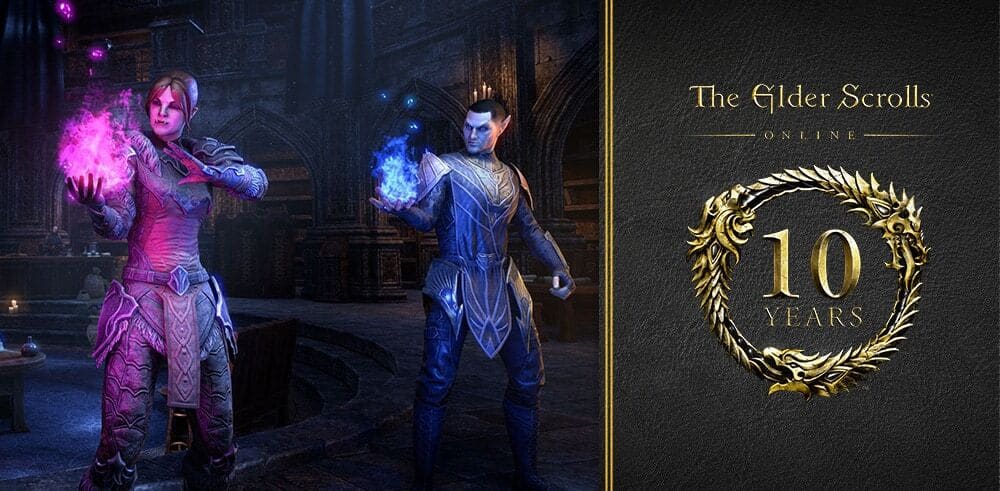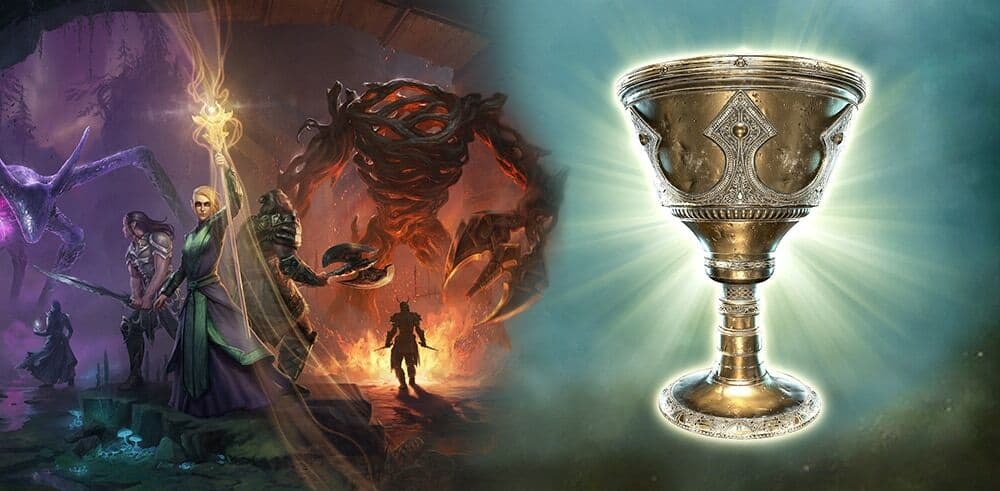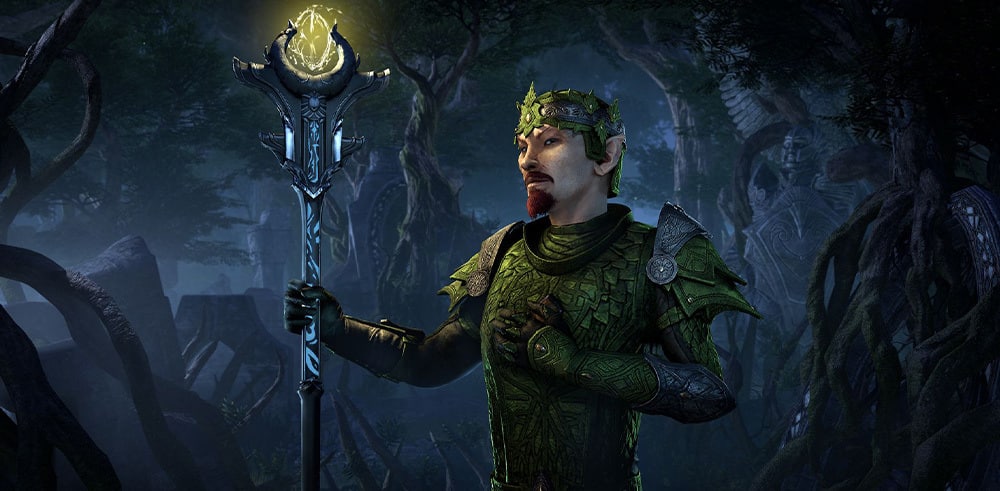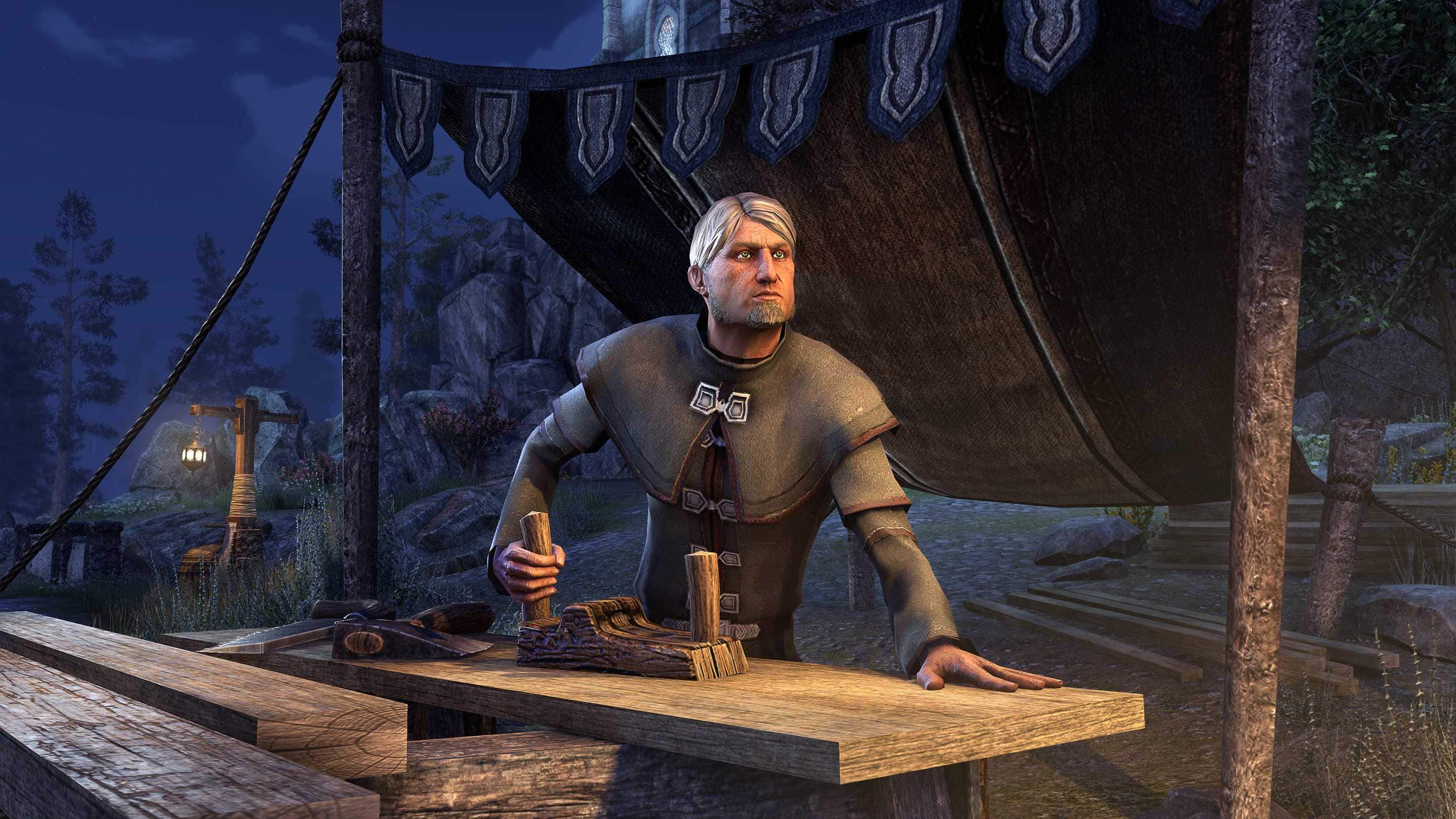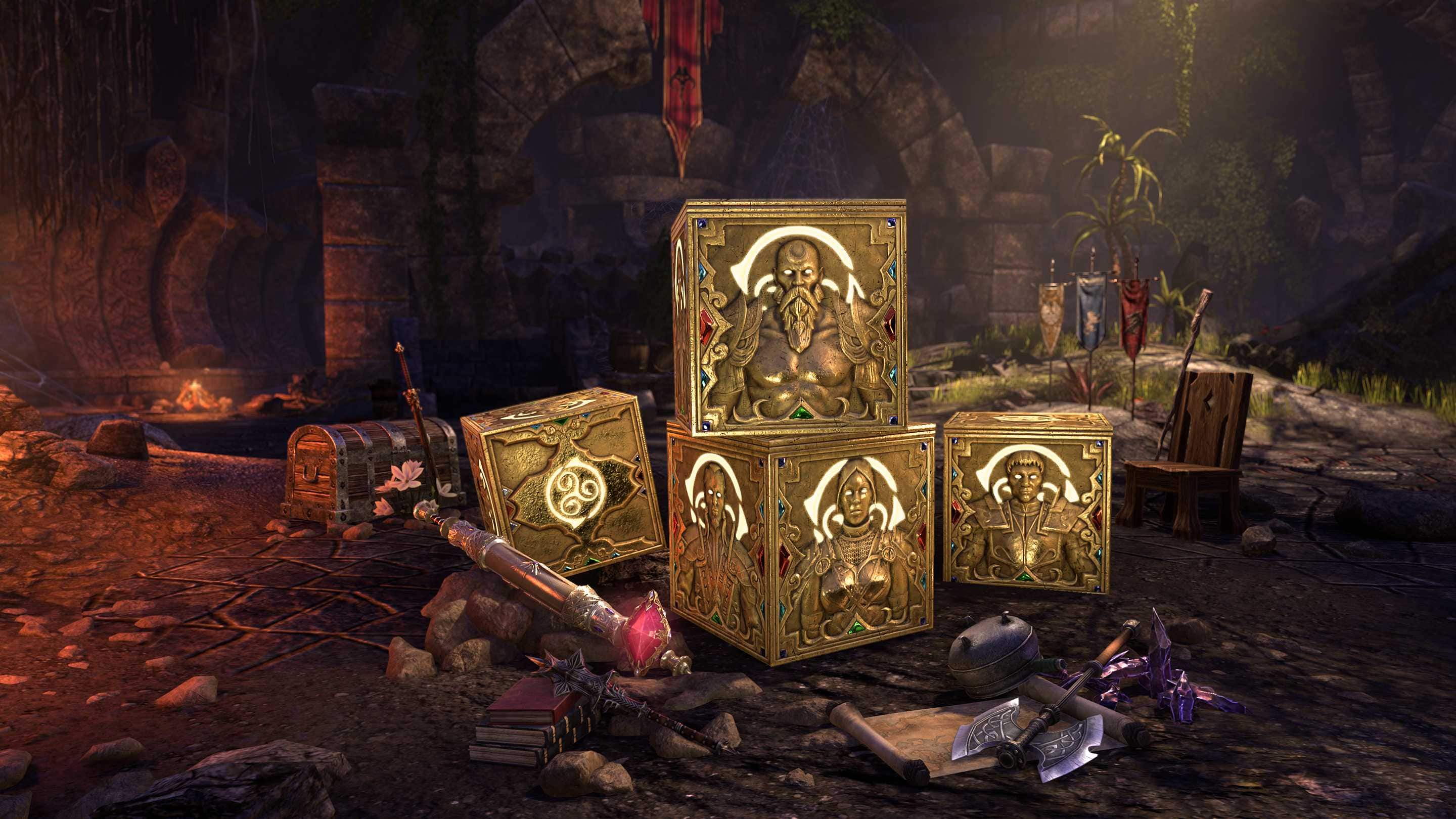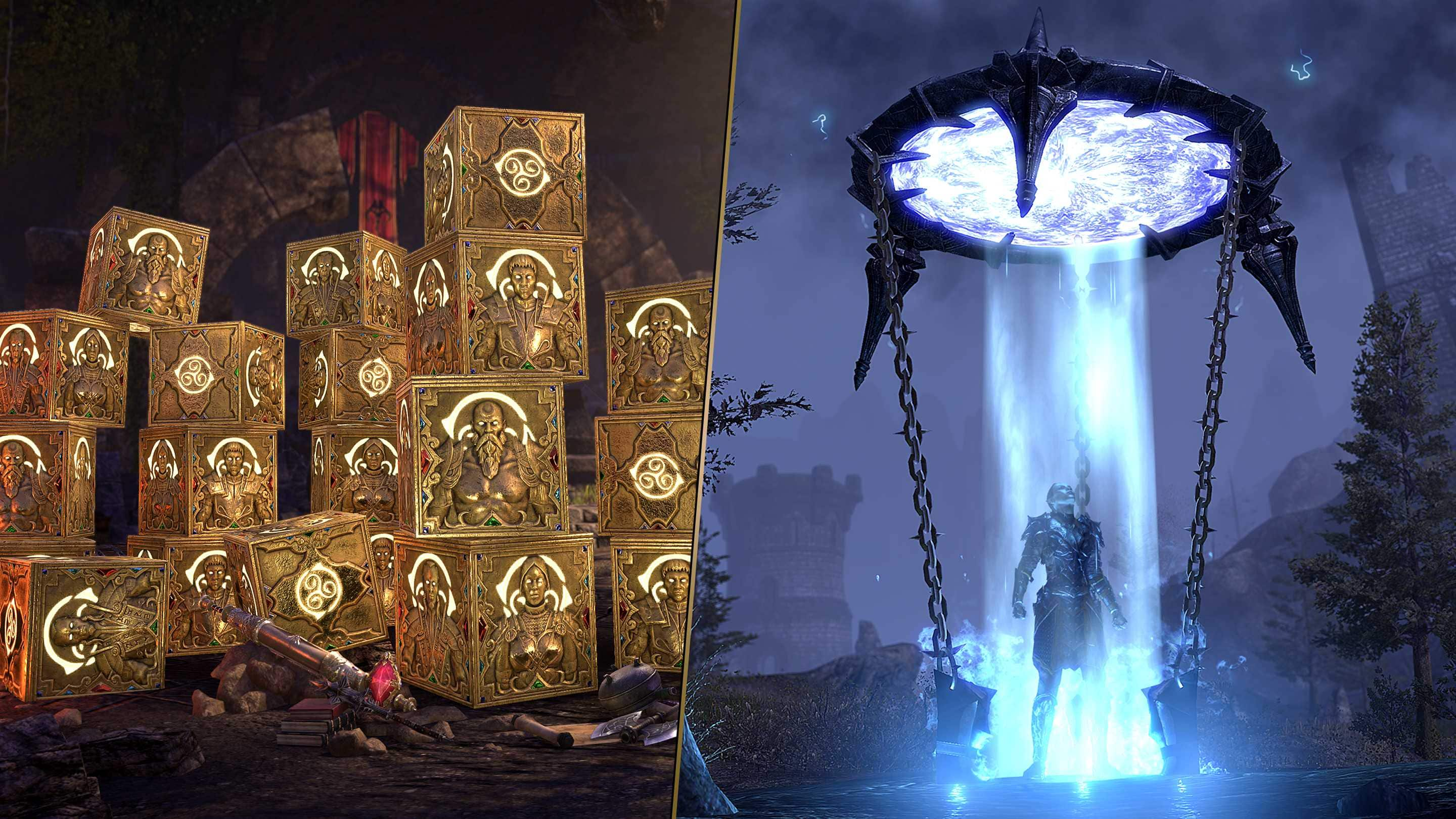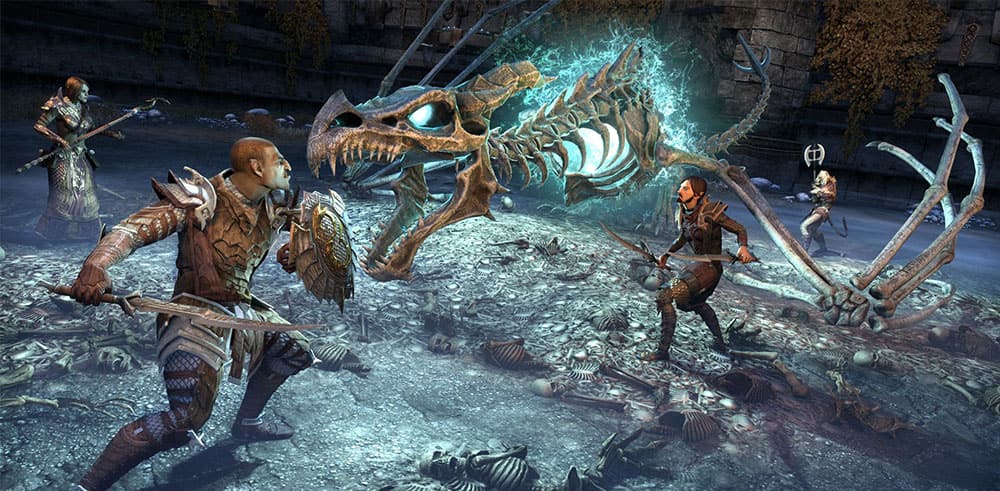
In this part of an ongoing series delving into how ESO’s developers design Tamriel’s Dungeon and Trial bosses, the team discusses boss mechanics and difficulty. Once again, we are joined by Lead Encounter Designer Mike Finnigan and Senior Content Designer Shane Slama to share their expertise with the ESO community and shed more light on the boss design process.
Where does the dev look for inspiration when designing a boss’ abilities and mechanics?
Shane Slama: We generally attack that from a couple of different angles. Something our designers do first is figure out what the boss is all about. What's their background? What's their story? What kind of monster is it? All that can give a good foundation to go from.
In addition, we also go through the catalogue of stuff we've already done and see how this type of monster was presented previously. We want to keep that through-line to an extent, but we also want to introduce unique stuff. Although we don't want those unique things to be something that’s totally divorced from what the identity of that monster type is.
Finally, once they’ve got the environment worked out, they’re also thinking about how the boss is going to move around in and use the space, which also informs its mechanics.
What kind of challenges does a designer encounter when working on a new boss?
Shane Slama: It can be enticing to focus too much on the mechanics themselves, instead of trying to take a holistic approach by using the storytelling. We can design all kinds of crazy and cool abilities, but if the designer gets too hung up on individual mechanics, that can be a trap.
The best way for the combat to play out, I think, is by continuing to tell the story that's already started. And any time we get hung up trying to think about what this boss is going to do, we need to take a step back to think about the encounter’s background, the storytelling, and characters.
Mike Finnigan: We go through that a lot in review and iteration. Somebody will put together this mechanic and we'll play it, but then think, “Okay, well, we got the one thing and that works, but there's got to be other aspects of the fight.” It's very much a layered approach where we say, “You’ve got that one cool big mechanic, but what else is going to happen?” We're not building a fight for one moment.
A boss should help inform and even drive the story
Do you design a new boss with the core roles in mind (DPS, Tanks, Heals)?
Mike Finnigan: Yes! We're thinking about those roles as we design and as we give feedback. When we go into playtests, we have people that are playing healers, DPS, and tanks, and we're getting feedback from them specific to their role. We'll ask the healer, “Did you feel challenged in this fight? Did you feel that you were a worthwhile member of this group?” Or for the tank, we’ll ask, “Did you ever feel threatened?” and stuff like that. We absolutely keep an eye on all those roles as we're designing and testing these bosses to make sure that people are adequately challenged based on their role.
Shane Slama: I think that when we do that well, it creates that connection between players and a sense that somebody is needed in their role. “I'm the healer. I'm here to keep you alive, you're here to make sure the baddies don't punch me in the face, and the damage dealers are here to take them out.” A feeling of synergizing together through the combat itself. It’s nothing fancy, but getting that right and making sure those elements are there to challenge those roles makes the fight feel more cohesive.
How do you approach designing a boss with multiple difficulties in mind?
Shane Slama: The numbers are a big part for sure, which might seem obvious. You know, health damage, etc. And these days, yeah, we have three tiers of difficulty, so numbers are a big part when we go into balance and we’re tuning those things. We also pay attention to things like attention economy. How many plates are we asking players to spin? And where can we fine tune that so it leads to new challenges or new abilities being introduced at the highest difficulties?
However, we also want to make sure that the most unique features of a boss encounter are experienced by everybody. So, we’ll identify those mechanics and try to tune those abilities to be able to be experienced in all difficulties. The more mechanics we can expose players to when playing on Normal mode difficulty, the greater the feeling of progression later. They see how a boss fight is going to work on Normal and then work their way up the difficulty tiers if they want to. Because they've had exposure to these abilities early, the boss isn’t throwing all sorts of new stuff at them as they climb.
Expect a much greater challenge in Hard Mode
If we really want to challenge our best players in the Hard Mode, it can't just be a numbers game. The fact that the boss hits harder or has more health is a part of it, but we also like to add a unique challenge that throws that extra plate in there (or sometimes two) to see if they can manage everything that's going on.
The fun part for us as designers is when we get to find ways to make those new challenges complement the rest of the fights. We come up with a nice foundation across all difficulties, but then integrate these new abilities that both complement what's already there and ratchets it up a little bit.
Is it deliberate that, in Dungeons or Trials, early bosses are less complicated than end bosses?
Shane Slama: To an extent. Ideally, we do want to see somewhat of a progression where the first boss maybe is a little less complicated, the second adds another layer, and the third or final boss is where the craziest stuff happens.
Mike Finnigan: And we budget the Dungeons and Trials for that, too. So generally, the final boss is going to have more Art resources dedicated to it to account for its added complexity.
-
That’s it for now! Keep an eye out for one final boss deep dive soon where the team will talk about balancing power and mechanics, the ever-important role of QA, and how the team iterates when the boss makes it to the PTS and goes live! If you missed the first part of this series, be sure to check it out here. And don’t forget, if you enjoyed this inside look at how the ESO developers approach boss design, let us know via Twitter, Instagram, and Facebook!

